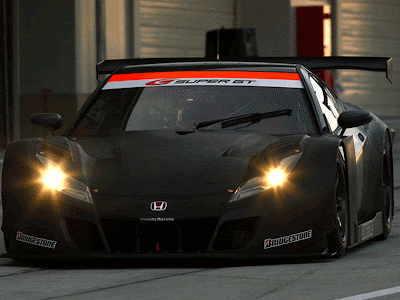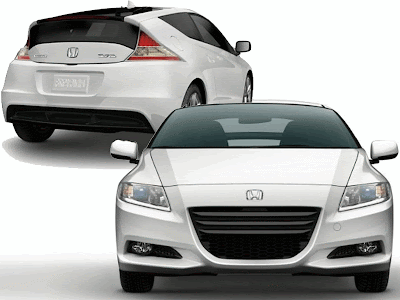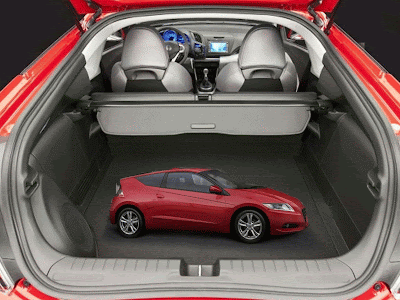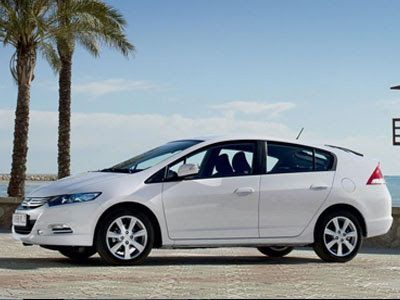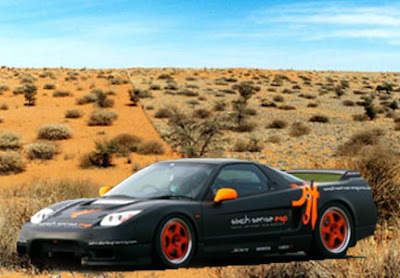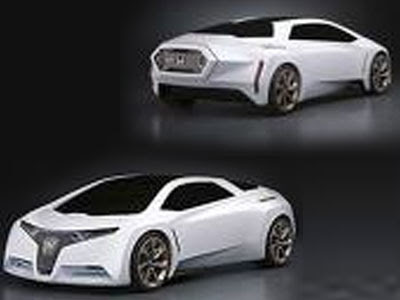Showing posts with label Honda. Show all posts
Showing posts with label Honda. Show all posts
2010 Honda Racing HSV-010 Super GT
2010 Honda Racing HSV-010 Super GT
2010 Honda Racing HSV-010 Super GT
2010 Honda Racing HSV-010 Super GT
2010 Honda Racing HSV-010 Super GT
2010 Honda Racing HSV-010 Super GT
Honda Motor Co., Ltd. introduced the Honda HSV-010 GT, which will compete in the GT500 class of the 2010 Super GT Series.Honda HSV-010 GT Technical Specifications :
- Dimensions
* Length: 4675 mm
* Width: 2000 mm
* Vehicle weight: 1100+ kg
- Engine
* Engine name: HR10EG
* Configuration: Liquid-cooled, naturally aspirated, longitudinal V8
* V angle: 90°
* Valve train: Gear-driven DOHC - 2 intake and 2 exhaust valves per cylinder
* Displacement: 3397 cm3
* Bore x stroke: 93.0 x 62.5 mm
* Maximum output: 500 PS (370 KW)
* Maximum torque: 392 Nm
* Throttle control system: Mechanical
* Fuel supply system: Programmed fuel injection system (Honda PGM-FI)
* Fuel: Lead-free premium gasoline
* Lubrication: Dry sump
- Powertrain
* Transmission mechanism: Constant mesh
* Transmission shifting method: Steering paddle shifter
* Steering system mechanism: Rack and pinion system with electric power steering (EPS)
- Tires
* front: 330/40R18
* rear: 330/45R17
- Brake type and mechanism: Hydraulic ventilated disc system
- Suspension system: Double wishbone
- Stabilizer: Torsion bar
Labels: 2010, Honda, Racing Car
2011 CR Z Honda Hybrid Sport Car Coupe
The all-new 2011 Honda CR-Z sport hybrid coupe, making its U.S. production debut at the North American International Auto Show in Detroit, introduces sleek styling and sporty handling to the hybrid segment, American Honda Motor Co., Inc., announced today.
John Mendel, executive vice president of sales for American Honda, said "The CR-Z is a personal sport hybrid coupe for people with a spirit of adventure and an elevated sense of responsibility toward the environment, it's the first hybrid designed to maximize style and fun, in addition to efficiency and economy."
2011 CR Z Honda Hybrid Sport Car Coupe
Set to go on sale late summer in the U.S., the CR-Z is powered by a 1.5-liter i-VTEC engine with Honda's compact and lightweight Integrated Motor Assist (IMA) hybrid-electric system. The two-passenger CR-Z introduces a new three-mode drive system that allows the driver to select between Sport, Econ (Economy) and Normal driving modes. The two trim levels include the well-equipped CR-Z and the feature-rich CR-Z EX. A six-speed manual transmission is standard equipment and a Continuously Variable Transmission (CVT) is available. Standard features on the CR-Z include Vehicle Stability Assist, an AM/FM/CD/USB audio system with six speakers, automatic climate control, power windows and door locks, remote entry, cruise control, and more. The CR-Z EX adds, High-Intensity Discharge (HID) Headlights with Auto-On/Off, fog lights, a 360-Watt AM/FM/CD premium audio system with seven speakers including subwoofer, Bluetooth® HandsFreeLink®, perforated leather-wrapped steering wheel, and more. The CR-Z EX is available with the Honda Satellite-Linked Navigation System1 with voice recognition.
2011 CR Z Honda Hybrid Sport Car Coupe
The foundation of the 2011 Honda CR-Z Sport Hybrid Coupe’s hybrid powertrain is a 4-cylinder, 16-valve, single overhead cam engine with “intelligent” Variable Valve Timing and Lift Electronic Control (i-VTEC) that receives additional power from the IMA system’s DC brushless electric motor. The system delivers a combined peak output of 122 horsepower2 at 6,000 rpm and 128 lb-ft. of torque2 at 1,000 to 1,500 rpm (123 lb-ft on CVT-equipped models). The Honda CR-Z Sport Hybrid Coupe standard six-speed manual transmission is engineered for optimal acceleration performance in gears one through five and for optimal fuel economy in sixth gear.
2011 CR Z Honda Hybrid Sport Car Coupe
The CR-Z's three-mode drive system allows the driver to select between individual modes of performance for Sport, Normal and Economy driving styles. The system is activated via three backlit buttons to the left of the steering wheel.
The Sport mode enhances multiple vehicle systems for performance including the engine throttle responsiveness, electric power steering effort and the electric motor power assist. The inner ring of the tachometer illuminates red when the vehicle is in Sport mode.
2011 CR Z Honda Hybrid Sport Car Coupe
During Econ mode operation, the engine's responsiveness is tuned for optimal economy, the electric motor assist gives priority to fuel efficiency and the air conditioning system can reduce its overall load on the engine. The inner ring of the tachometer transitions between blue and green when the vehicle is in Econ mode, with the green representing more ecological driving.
2011 CR Z Honda Hybrid Sport Car Coupe
Normal mode provides standard settings for steering, engine response, motor assist and air conditioning. Similar to Econ mode, the tachometer ring transitions between blue and green when the vehicle is in normal mode, with the green representing more ecological driving. Like the Honda Insight, the CR-Z offers an Eco Guide and Eco scoring feature to help drivers track progress of efficient driving styles.
Labels: 2011, Honda, Hybrid Car, Sport Car Coupe
Although the Honda Insight design team started with a blank piece of paper - in that this was a brand new model with no history - they faced many challenges in creating the exterior appearance of the Honda Insight.
On the one hand, as a low emission hybrid car, it had to express environmental credentials - it had to look like a 'green' car - but on the other hand it had to appear dynamic and fun to drive; part of Honda's key design principles. Above all, in line with the positioning of Honda Insight, the design had to appeal to a broad range of people.
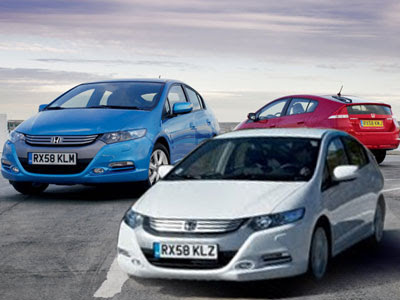 2010 Honda Insight EU Version
2010 Honda Insight EU VersionWhile the 'greenness' of the car may have challenged the sporty direction of the overall design, in some areas it actually helped the dynamic cause. Because the newly-developed IMA system is more compact, it meant the nose of the car could be shorter, creating a snubbed, more aggressive look to the front end.
Another important factor that led (and to some extent restricted) the exterior design was the bodystyle itself. To appeal to as many people as possible, a 5-door layout was chosen, and this brought its own challenges, particularly when optimising the aerodynamics of the car, and creating enough headroom for passengers in the rear.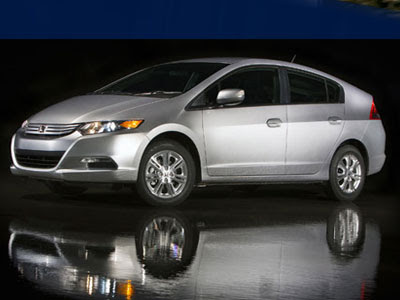
2010 Honda Insight EU Version
The Insight adopts slim, projector-style headlights in a 4-light cluster. The headlight's low beam has blue detailing, and the indicators are located in the lower bumper face.
Firstly, the line from the centre of the roof to the top of the boot lid is at the optimum angle for controlling the flow of air off the top of the car, with minimum turbulence. Also, you'll notice that the top half of the body tapers in towards the rear of the car, which also helps the air flow travel smoothly over the car. Stable air flow over this section helps the car pass through the air with minimal drag.

2010 Honda Insight EU Version
"The concept for the main shape of the car is called 'Aero Athlete'," says Mr Minowa. "It reflects a sporty, lean body with no fat, the tension of muscles and nothing unnecessary added." The Honda Insight is fitted with a seven-spoke alloy design, to enhance the sporty image of the car.
All Honda Insight grades are equipped with Honda's Vehicle Stability Assist (VSA) system, designed to assist the driver in maintaining control during cornering, acceleration and sudden manoeuvres by applying braking to the right or left hand wheels as necessary and managing the engine torque systems.
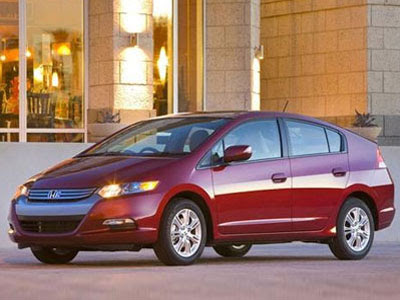 2010 Honda Insight EU Version
2010 Honda Insight EU VersionHonda's IMA hybrid system concept is now 10 years old - having made its debut in the original Insight back in 1999. IMA stands for Integrated Motor Assist, which consists of a low-friction 1.3 litre engine that serves as the primary power source, an ultra thin electric motor, a lightweight and compact battery with a continuously variable transmission.
This system has been used successfully in not only the Honda Insight, but also the Civic IMA, and its successor, the Civic Hybrid. Over the years the system has evolved and become smaller, more lightweight and less expensive to produce, and the latest version in the new Honda Insight is the most advanced IMA technology introduced by Honda to date. The fifth generation IMA system in the Insight is 24% more compact than the fourth generation system freeing up space for luggage.

2010 Honda Insight EU Version
The engine itself is new, but is based heavily on the 1.3-litre from the Civic Hybrid. This modified i-VTEC unit from the Civic Hybrid has been further enhanced with lessons learned from the Jazz incorporated to improve fuel economy. The low friction, pattern coated piston design has been combined with a new catalyst design to further optimise this already highly efficient power unit. These measures along with a further stabilised combustion process give a fuel economy improvement for the engine alone of 2% on what is already a highly-efficient unit.
When combined, the motor and engine produce lively performance ideal for urban environments, with good throttle response and acceleration times to rival conventional 1.6-litre petrol cars with automatic gearboxes. The Honda Insight reaches 100 km/h from a standing start in 12.6 seconds, and goes on to a top speed of 186 km/h.

2010 Honda Insight EU Version
Using a CVT transmission in a hybrid provides smooth and predictable gear transitions and helps keep the IMA system operating in its most efficient range. In the Insight, an evolution of the high-torque CVT unit from the Honda Civic Hybrid is used.
This version of CVT has a lower final drive gear ratio (4.200 from 3.937), which results in faster-acting initial acceleration performance.
Labels: 2010, Honda, Hybrid Car, Sports Car
2009 Honda NSX
The unique Japanese sportscar Honda NSX has been built by John Danby Racing to comply with the Britcar Production regulations and completed a successful shakedown test at Snetterton in Norfolk last Friday with sportscar racer James Barclay.

2009 Honda NSX
The Honda NSX features the latest technology gizmos and features innovative engine control and data-logging capabilities including GPS, Fly by Wire and live feed video. High specification custom solutions have also been engineered for the NSX such as dampers and brakes.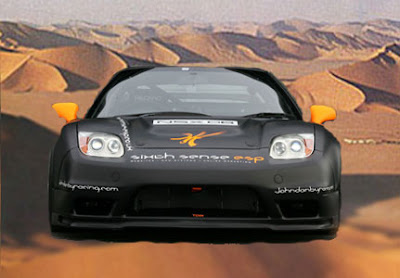

2009 Honda NSX
We gather that you’ll appreciate these photos of John Danby Racing team’s newly developed (and oh-so sizzling hot) Honda NSX racer. The matte black Japanese sportscar was built to comply with the Britcar Production regulations and has already completed a successful shakedown test last Friday ahead of its debut at the season’s final round at Brands Hatch on November 7.

Labels: 2009, Honda, Race Car, Racing Car, Sports Car
Honda S2000 Ultimate Edition
This limited edition has been produced to mark the end of production for the award winning sports car.Honda has announced that the Honda S2000 Ultimate Edition goes on sale in Europe in March 2009.
The Honda S2000 Ultimate Edition retains its highly acclaimed 2.0 litre 9000 rpm VTEC engine and combines it with a Grand Prix White body and graphite coloured alloy wheels. The shade of the paint evokes the colour first used on Honda's 1964 F1 car and many sporting models since. The exterior colour combination with the dark metal alloy wheels and unique black S2000 badging gives a fresh look to the timeless shape of the roadster body.

Honda S2000 Ultimate Edition
The white exterior will be matched with a red leather interior and complimented by unique red colouring for stitching on the gear lever gaiter. Ultimate Editions will be marked out by their unique numbered plaques on the kickplates, denoting their position in the series.
The 2-seater sports car may now be almost 10-years old, but its 240PS 2-litre is still one of the highest output per litre and highest revving engines ever made. In recognition of its incredible power output, the Honda S2000's engine has won the International Engine of the Year category for 1.8 to 2.2 litre engines five times in its lifetime.
As the name suggests, the Honda S2000 Ultimate Edition will be the last version before global production of the model ceases altogether at the end of June 2009. Since the introduction of the Honda S2000 in 1999 until the end of 2008, Honda has sold 110,673 units worldwide - 19,987 of those in Europe.
Honda Indy Racing Car
Racing Car Honda Indy project concept has been designed to offer superior aerodynamic performance.
The Honda and the Indy Racing League was sponsored by Honda Indy Racing Car project. Yutian Li,the vehicle's designer, is a graduate of the Transportation Design course at the College for Creative Studies in Detroit, Michigan. Yutian also holds a bachelors degree in vehicle engineering and a masters in industrial design from Tsinghua University in Beijing, China.
The overall shape of the Honda Indy Racing Car was inspired by modern architecture - but more specifically Zaha Hadid's work which is greatly influenced by topological patterns found in nature and has a high degree of fluidity and continuity. Yutian applied this theme to vehicle design by using a combination of blended surfaces, and crossing/overlapping shapes in order to bring a whole new look to the future Indy Car Series.
Honda Indy Racing Car
Aside from bringing completely new forms to the racing world, the Honda Indy Racing Car has also been designed to offer superior aerodynamic performance. The large integrated rear wing located above the engine creates downforce over the rear axle. This downforce is increased once the engine is up at operating temperature because of the pressure difference between hot and cold air. The side panel directs the air to go around the wheels so that rotating drag is reduced. The air box on either side of the driver and the large air intakes in the front ensure sufficient airflow to the engine.
As with all racing vehicles, driver safety in the event of a crash is the utmost priority. The driver of the Honda Indy Racing Car concept is protected by a structure which was inspired by the shape of leaves. This unit is designed to diffuse the energy of the collision, and at the same time keep the interior cockpit structure intact.
Aside from keeping the rear tires firmly in contact with the track surface, the expansive rear spoiler also acts as a prominent billboard which could make the Indy series more attractive to sponsors. The stripe which divides this spoiler in two contains a thermally sensitive material which changes color depending on engine temperature. This is designed to add more excitement to the race and the spectators.
The Honda and the Indy Racing League was sponsored by Honda Indy Racing Car project. Yutian Li,the vehicle's designer, is a graduate of the Transportation Design course at the College for Creative Studies in Detroit, Michigan. Yutian also holds a bachelors degree in vehicle engineering and a masters in industrial design from Tsinghua University in Beijing, China.
The overall shape of the Honda Indy Racing Car was inspired by modern architecture - but more specifically Zaha Hadid's work which is greatly influenced by topological patterns found in nature and has a high degree of fluidity and continuity. Yutian applied this theme to vehicle design by using a combination of blended surfaces, and crossing/overlapping shapes in order to bring a whole new look to the future Indy Car Series.

Honda Indy Racing Car
Aside from bringing completely new forms to the racing world, the Honda Indy Racing Car has also been designed to offer superior aerodynamic performance. The large integrated rear wing located above the engine creates downforce over the rear axle. This downforce is increased once the engine is up at operating temperature because of the pressure difference between hot and cold air. The side panel directs the air to go around the wheels so that rotating drag is reduced. The air box on either side of the driver and the large air intakes in the front ensure sufficient airflow to the engine.
As with all racing vehicles, driver safety in the event of a crash is the utmost priority. The driver of the Honda Indy Racing Car concept is protected by a structure which was inspired by the shape of leaves. This unit is designed to diffuse the energy of the collision, and at the same time keep the interior cockpit structure intact.
Aside from keeping the rear tires firmly in contact with the track surface, the expansive rear spoiler also acts as a prominent billboard which could make the Indy series more attractive to sponsors. The stripe which divides this spoiler in two contains a thermally sensitive material which changes color depending on engine temperature. This is designed to add more excitement to the race and the spectators.
Labels: Concept Car, Design Car, Honda, Project Car, Racing Car, Spors Car
Honda FC Sport Fuel Cell Concep
The FC Sport can be summed up like this: Imagine beating your best lap time while hearing nothing but the tires rubbing the tarmac and the quiet buzz of the high-torque electric motors. Picture a true no-holds-barred supercar with all the speed, handling and sleek looks of today's fastest sports cars, yet without the noise, heat, vibration and emissions of the internal-combustion engine.
Built as a design study, the FC Sport demonstrates Honda’s vision for making environmentally responsible vehicles that are also fun to drive. The "FC" stands for "Fuel Cell" as in hydrogen fuel cell—the same technology powering the FCX Clarity. With a 3-seat, driver-centered cockpit, a fuel cell powerplant opens the door for unprecedented engineering flexibility, allowing for a lower center gravity than any modern, piston-engined sports car. The FC Sport is symbolic of a future in which alternative fuel and zero emissions will rule the sports car world.
Built as a design study, the FC Sport demonstrates Honda’s vision for making environmentally responsible vehicles that are also fun to drive. The "FC" stands for "Fuel Cell" as in hydrogen fuel cell—the same technology powering the FCX Clarity. With a 3-seat, driver-centered cockpit, a fuel cell powerplant opens the door for unprecedented engineering flexibility, allowing for a lower center gravity than any modern, piston-engined sports car. The FC Sport is symbolic of a future in which alternative fuel and zero emissions will rule the sports car world.
Labels: Concept Car, Design Car, Hidrogen Full Cell, Honda, Sport Car
Subscribe to:
Posts (Atom)
